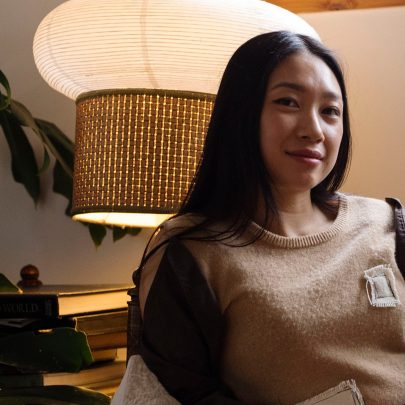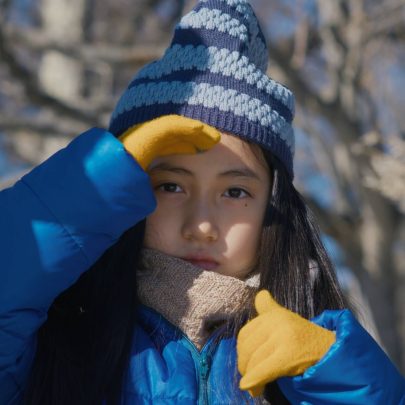Apr 9, 2013 Film & TV
The documentary is part of the Documentary Edge Festival at Q Theatre, April 10-21.
What is the status of rugby in the US?
Through making the film I discovered that rugby sits in a very different space in the US. Obviously it is a very rare sport to play, even though it is growing but more interestingly, its heritage is in Ivy League universities who have continued to take pride in a tradition of rugby. So while here every Tom, Dick and Harry plays the sport, it is seen as an elite sport in the US. So the connection with education isn’t such a stretch for these students.
How and when do you find a narrative in a documentary?
As a film maker I was wanting to avoid just making a promotional film for the club, and Stuart Krohn, the founder of the ICEF rugby programme and US-based producer, was happy for me to show everything “warts and all”. I am personally very positive about the programme but knew that if we were going to make heroes of these students that we would have to show their flaws and struggles. Of course in a high intensity trip like this those issues naturally come to the fore and so the shooting was all about being there for the moments of conflict and overcoming.
But of course the story is really told in the edit, over about eight weeks I whittled down 15 characters we filmed to seven, based on the power of their individual stories and their roles in the team dynamic.
There’s a tension in the storytelling between portraying the American students as victims of a violent, poor backgrounds growing up in South Los Angeles and yet in the documentary some students explicitly rail against that stereotype. Is it difficult to manage people’s perception of themselves and the reality as you see it?
There is. It was a difficult issue to deal with, and was a primary concern in the documentary. I felt there was a way to do justice to the struggles the students faced but also show that they are part of a new generation of young educated and motivated students who are conscious of the damaging effects of exploitative media representations of their neighbourhood.
I had to take this all the more seriously when I saw the reaction of the team to a short Close Up segment that was filmed when they were here. I used the segment as an example of the sort of stereotyping that mainstream media thrives on with regards to South LA. So it was doubly important for me not to fall into my own trap.
I was confident that we could ride that fine line because I knew that the stories we used were offered up by the students, rather than as a result of the sort of rigorous probing necessary for short TV segments.
While shooting, my long time friend and sound recordist told me that he was finding, from the students interviews, that he related most to the ordinary issues that come with growing up and was reminded just how hard it was being a teenager, and navigating the various personal relationships, expectations, social pressures, conflicts at home, the fear of adulthood and the frustrations of childhood. This reminded me that while some students were dealing with the struggles associated with stereotypical South Central streets, those were only part of a wide range of things all teenagers struggle to overcome.
You capture some very emotional moments. What was the most moving moment for you during filming?
DeJanae’s character was a real surprise, we found her very late in the filming, she wasn’t a standout player and had a quiet personality, but I noticed her speak up in a team meeting in Kaikoura. She spoke with a sort of nervous strength, speaking out against some of her teammates, very brave. The next day our production assistant Chris Scott got chatting with her, and found she had missed out on a College application, I thought it was worth interviewing her to talk about that and maybe see where that strength I’d noticed the night before came from. She blew me away. I was holding back tears all the way through that interview as she, unprompted, started pouring out her story in that same trembling voice, refusing to cry herself.
As for the edit, I cry all the time when I’m editing, it’s one of my measures for whether an emotional scene is working.
What did the American teens find most surprising about New Zealand?
Many of them had that look of wonder when they got here, all that the wide-open outdoorsy stuff that New Zealand is famous for, the first night in Raglan staring up at the stars, never having seen so many, that sort of thing. I think they were genuinely surprised by the people, Leodes was intimidated by Winiata (a large Maori man with a prominent Ta Moko) when he delivered his powhiri, but they formed some very strong bonds with the New Zealanders they met.
These kids are good athletes! When the tour started, did you expect the American teams to do so well against the New Zealand competition?
I had seen the size of Cameron – the boys number eight [who is 6ft4] – and I had seen some footage of Jennese in play and she was unstoppable, so I knew there was a good chance that at the very least the Kiwi teams would be surprised by the star players.
Who do you think will win gold for rugby at the 2016 Olympics?
All power the US, I’m sure they’ll have a good crack at retaining Olympic rugby gold, they invest heavily in creating Olympic champions and the sport is growing. But I’d still be betting on the Kiwis, in the men’s at least. Women’s rugby is a whole different story, where as recently as the 90s the US have been serious competitors, so if the US win a rugby gold in 2016 it will be the ladies that do it. Hopefully we’ll be there following one or two ICEF players in the US Olympic teams…
What doco, other than yours, are you most looking forward to seeing in the DocEdge festival?
I’m looking forward to seeing my good friend Monica DeAlwis’ Pretty Brutal on the big screen, she’s poured years into it, and has told a great and hard-fought story about roller derby.





